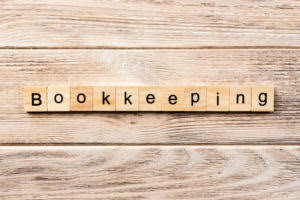You can use estimated tax payments to pay both income tax and self-employment tax (Social Security and Medicare). You also don’t have to make estimated tax payments until you have income on which you will owe tax. So, for example, if you don’t have any taxable income in 2022 until August, you don’t have to make an income statement estimated tax payment until September 15. This relief is designed to help taxpayers who were unable to properly adjust their withholding and estimated tax payments to reflect an array of changes under the Tax Cuts and Jobs Act. When you file your annual tax return, you can apply any overpayment from the previous year to your estimated payments for the current year.
Paying quarterly estimated taxes all at once?
- Your payments should be 100 or 110 percent of last year’s taxes, depending on your income.
- If you work as a farmer or fisherman or qualify as a certain higher income taxpayer, there are special rules for estimated tax payments.
- Wage-earners and salaried employees can avoid estimated tax payments by having their employer withhold tax from their wages.
- If you receive a paycheck, the Tax Withholding Estimator will help you make sure you have the right amount of tax withheld from your paycheck.
But it might not be an accurate amount if you don’t know exactly how much you’ll make for the rest of the year—and that could lead to an underpayment penalty. Waiting to pay until the end of the year could also result in an underpayment penalty—because you’ll have missed earlier quarterly deadlines to pay—plus interest charges. Instead of trying to make 1 lump sum payment, it’s recommended to make estimated payments by the quarterly due dates. You’re responsible for paying estimated quarterly taxes even if it’s your first year in business or as a freelancer. Because you won’t have your previous year’s tax return to guide you, the annualized method for estimating will probably be best.
What are estimated tax payments?
If your income increases and you estimate that your adjusted gross income will be $150,000 or more, you should calculate your estimated payments for that year based on 110% of the previous year’s tax bill. Following this 110% rule will help you avoid interest charges and penalties at tax time. Wage-earners and salaried employees can avoid estimated tax payments by having their employer withhold tax from their wages.
What happens if I miss a quarterly estimated tax payment?
- You may need to make estimated tax payments depending on how much tip income you have.
- So to figure what percent you should pay each quarter, make a projection of a full year’s taxable income for all your activities, figure the taxes you will owe on that amount and pay 25 percent each quarter.
- They don’t get sent in with your tax return so the IRS won’t be expecting them.
- The usual percentage threshold is 90 percent to avoid a penalty.
- The good news is that you can deduct half of the amount you pay in self-employment tax from your income when calculating your income tax.
For this approach, you’d take the amount that you owed the previous year and divide that number by 4. If, for example, you owed $20,000 in taxes last year, you’d make 4 equal payments of $5,000 each quarter. This method is generally best for people on year 2 or more of earning income without taxes withheld—and whose income is fairly stable from year to year, as well as throughout a single year. If you make significantly more compared to the estimated tax prior year, you might need to adjust your payments to avoid underpaying and incurring penalties.
When to and how to change your withholding or pay estimated taxes
- Plus, there are special rules for farmers, fishermen and certain household employers.
- The banks, lenders, and credit card companies are not responsible for any content posted on this site and do not endorse or guarantee any reviews.
- If you’re a calendar year taxpayer and at least two-thirds of your gross income for 2023 or 2024 is from farming or fishing, you have only one payment due date for your 2024 estimated tax, January 15, 2025.
- Using the Electronic Federal Tax Payment System (EFTPS) is the easiest way for individuals as well as businesses to pay federal taxes.
- In some cases, this means prepaying the full year’s worth of estimates in place of your first estimated tax payment in April.
- IRS Publication 505 has all the rules and details, and good tax software will help you fill out the form and do the math.
- If a due date falls on a weekend or legal holiday, the deadline is pushed to the next business day.
Of course, you also will need to have a solid estimate of your expected gross income for the year, as well as any deductions and credits that you plan to use. Some taxpayers must make quarterly estimated tax payments throughout the year. This includes sole proprietors, partners, and S corporation shareholders who expect to owe $1,000 or more when they file. Individuals who participate in the gig economy might also have to make estimated payments.
- You don’t have to make any payment until you have income on which estimated taxes are due.
- However you pay, save your payment confirmations or canceled checks and don’t forget to note your payments on your federal tax return.
- Because you won’t have your previous year’s tax return to guide you, the annualized method for estimating will probably be best.
- The updated federal tax withholding tables, released in early 2018, largely reflected the lower tax rates and the increased standard deduction brought about by the new law.
- The concept of estimated taxes is not overly complicated, yet many people do not fully understand what these payments are, or how they work.
- This table shows when quarterly estimated taxes are due to the IRS.
Instead, they are due in January, April, June, and September. This method could be best for people whose income fluctuates substantially from year to year, as well as from quarter to quarter. It makes it possible to avoid underpayment and corresponding penalties—and a potentially high quarterly tax https://www.bookstime.com/articles/real-estate-taxes bill when you didn’t earn enough to pay it.






